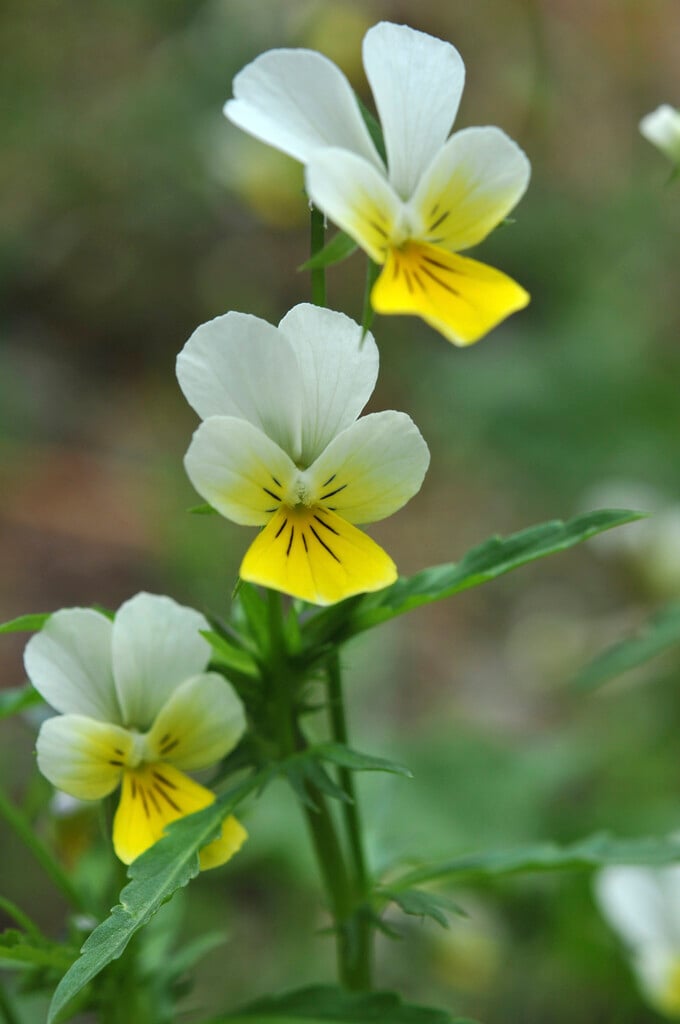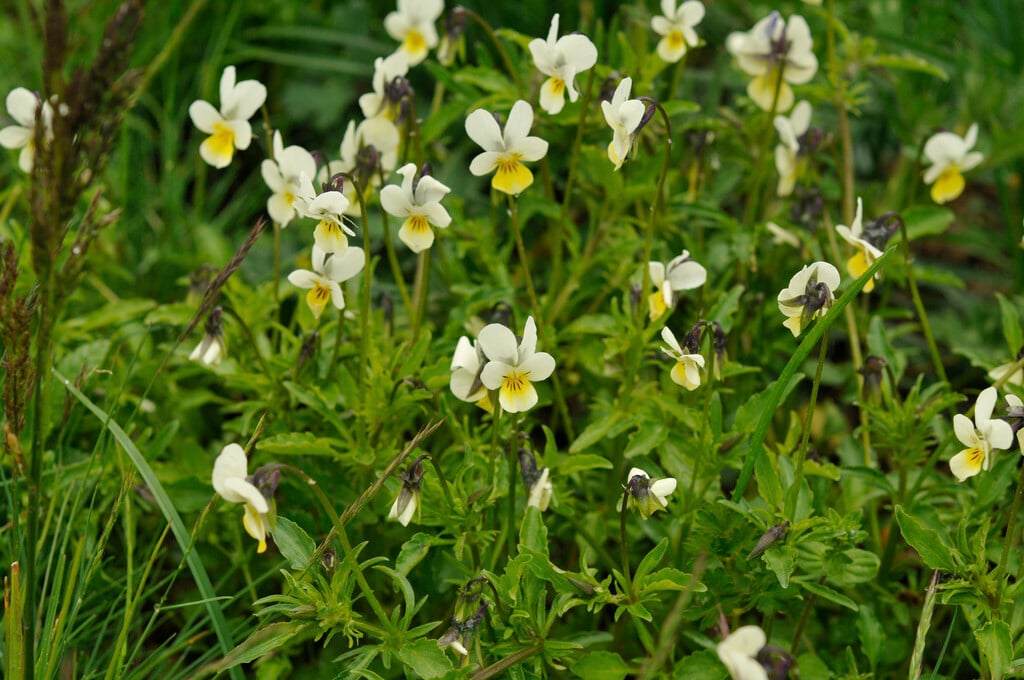Viola arvensis
field pansy
An annual or biennial wildflower, with a basal rosette of spoon-shaped leaves with bluntly toothed edges. Flowers from spring through to late summer, with leafy, upright stems bearing small, creamy white flowers, around 1cm across, with a yellow mark flecked with purple on the lower petal
Size
Ultimate height
0.1–0.5 metresTime to ultimate height
1 yearUltimate spread
0.1–0.5 metresGrowing conditions
Moisture
Well–drainedpH
Acid, Alkaline, NeutralColour & scent
| Stem | Flower | Foliage | Fruit | |
| Spring | Cream White Yellow Purple | Green | ||
|---|---|---|---|---|
| Summer | Cream White Yellow Purple | Green | ||
| Autumn | ||||
| Winter |
Position
- Full sun
- Partial shade
Aspect
South–facing or West–facing
Exposure
Exposed or Sheltered Hardiness
H7Botanical details
- Family
- Violaceae
- Native to GB / Ireland
- Yes
- Foliage
- Deciduous
- Habit
- Tufted
- Genus
Viola can be annuals, biennials or deciduous or evergreen perennials, with simple or pinnately lobed leaves and 5-petalled flowers of characteristic shape
- Name status
Correct
How to grow
Cultivation
Thrives in any well-drained soil in an open, sunny spot; often found in fields and on waste ground
Propagation
Propagate by seed, sown in situ in autumn or spring
Suggested planting locations and garden types
- Cottage and informal garden
- Wildflower meadow
- Wildlife gardens
- Banks and slopes
Pruning
No pruning required
Pests
May be susceptible to slugs, snails, aphids and violet leaf midges
Diseases
Generally disease-free, but may be susceptible to pansy leaf spot, powdery mildews, a rust and virus diseases
Love gardening
Sign up to receive regular gardening tips, inspiration, offers and more
View our Privacy Policy
Get involved
The Royal Horticultural Society is the UK’s leading gardening charity. We aim to enrich everyone’s life through plants, and make the UK a greener and more beautiful place.

